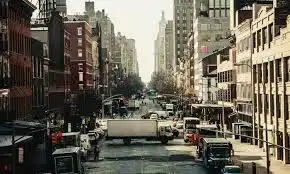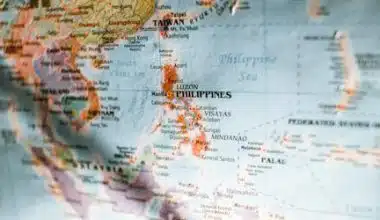No one ever wants to visit an unsafe city, state, or country that endangers their lives and families, especially in Chicago. This article lays emphasis on the worst neighborhoods in Chicago and the areas within the city that have experienced significant challenges, such as high crime rates, poverty, economic disparities, and social issues. These neighborhoods might struggle with issues related to safety, limited access to resources, a lack of quality education, and inadequate infrastructure. They describe areas where residents face various socioeconomic hardships. There are complex factors that contribute to these challenges.
Worst Neighborhood In Chicago
The worst neighborhoods in Chicago are the areas within the city that have high crime rates and are considered unsafe or dangerous. These neighborhoods may have high rates of violent crime, such as shootings and homicides, as well as property crime, like theft and burglary. Crime rates can fluctuate, and safety can vary from block to block. Exercise caution and be aware of your surroundings when in unfamiliar areas.
Here are some of the worst neighborhoods in Chicago:
#1. Riverdale
Located on the far south side of Chicago, this neighborhood has a high crime rate and is known for gang violence and drug activity.
#2. West Englewood
This is a neighborhood on the south side, West Englewood has a high rate of violent crime, including shootings and homicides.
#3. Washington Park
This neighborhood on the south side of Chicago has a high rate of violent crime, including shootings and robberies.
#4. Fuller Park
Located on the south side of Chicago, Fuller Park has a high rate of violent crime and is known for gang activity.
#5. Burnside
Located on the south side of Chicago, Burnside has a high rate of violent crime and is known for gang activity and drug trafficking.
#6. South Deering
Located on the far southeast side of Chicago, South Deering has a high rate of violent crime, including shootings and homicides.
#7. Pullman
This neighborhood on the far south side of Chicago has a high rate of violent crime, including shootings and robberies.
#8. Grand Crossing
It is located on the south side of Chicago, Grand Crossing has a high rate of violent crime and is known for gang activity.
#9. East Garfield Park
This neighborhood on the west side of Chicago has a high rate of violent crime, including shootings and homicides.
#10. North Lawndale
This neighborhood is located on the west side of Chicago, North Lawndale has a high rate of violent crime and is known for gang activity and drug trafficking.
#11. Austin
Austin has a high rate of violent crime and is known for gang activity, drug use, and prostitution.
#12. Roseland
Roseland has a high rate of violent crime and a reputation for being a dangerous neighborhood.
#13. South Shore
The South Shore has a high rate of violent crime and is known for gang activity and drug use.
#14. Woodlawn
Woodlawn has a high rate of violent crime and is known for gang activity and drug use.
#15. Auburn Gresham
Auburn Gresham has a high rate of violent crime and is known for gang activity and drug use.
Factors That Contribute To The Worst Neighborhood In Chicago
Several factors contribute to the worst neighborhoods in Chicago, including:
#1. High Crime Rates
Many of the worst neighborhoods in Chicago have high rates of violent crime, including shootings, homicides, and robberies.
#2. Gang Violence
Gang activity is a major problem in many of Chicago’s worst neighborhoods, contributing to the high crime rates.
#3. Poverty
Many of the worst neighborhoods in Chicago are characterized by high levels of poverty, which can contribute to a range of social problems, including crime and poor health outcomes.
#4. Lack of Resources
Some of the worst neighborhoods in Chicago lack access to essential resources, such as quality schools, healthcare, and job opportunities.
#5. Racial Segregation
Racial segregation has been a major factor in shaping Chicago’s neighborhoods. Many of the city’s poorest and most dangerous neighborhoods are located in predominantly African-American and Hispanic neighborhoods.
#6. Environmental Factors
Some neighborhoods in Chicago also face environmental challenges, such as high levels of air pollution, which can contribute to poor health outcomes.
#7. Limited Access to Education
Schools in these areas might struggle with inadequate resources, leading to lower-quality education and limited opportunities for students.
#8. Lack of Economic Development
Businesses might be scarce, and job opportunities might be limited, leading to economic stagnation within the community.
#9. Housing Issues
Dilapidated buildings, vacant properties, and inadequate housing options can contribute to a sense of neglect and instability.
#10. Lack of Access to Healthcare
Limited access to healthcare facilities and services can result in inadequate medical care for residents.
#11. Systemic Disinvestment
Historical patterns of disinvestment, redlining, and lack of public funding have contributed to the decline of these neighborhoods.
Insufficient access to social services, mental health resources, and addiction treatment can exacerbate existing challenges.
#13. Limited Transportation
Inadequate public transportation options can limit residents’ access to employment, education, and other opportunities.
#14. Community Divisions
Disconnections within the community, lack of trust in law enforcement, and limited community engagement can hinder collective efforts for improvement.
Steps Taken To Address The Challenges In Chicago
Here are some of the efforts that have been taken to address the challenges facing the worst neighborhoods in Chicago:
#1. A Comprehensive Plan to Reduce Violence
The city of Chicago has developed a comprehensive plan to reduce violence in the city, with a focus on addressing the root causes of violence and implementing evidence-based interventions.
#2. Address Health Inequities
Efforts are being made to address the root causes of health inequities, including poverty, lack of access to quality healthcare, and environmental factors.
#3. Redlining
Efforts are being made to address the legacy of past discrimination in redlined neighborhoods, including through initiatives to increase access to housing and economic opportunities.
#4. Air Pollution
The EPA has implemented national air quality standards to reduce air pollution, but challenges remain, particularly in urban areas like Chicago.
#5. Racial Disparities in Maternal and Infant Health
Efforts are being made to address racial disparities in maternal and infant health, including through initiatives to increase access to healthcare and address structural barriers.
#6. Chicago Freedom Movement
The Chicago Freedom Movement was a grassroots advocacy campaign that fought against unfair housing practices, and its legacy continues to inspire efforts to promote fair and affordable housing in Chicago.
#7. Child Labor in Cocoa Production
The U.S. Department of Labor has been working to address the challenge of child labor in cocoa-producing areas, including through technical assistance and awareness-raising campaigns.
#8. Advancing Equity in Housing
The Biden-Harris administration has taken steps to address racial discrimination in the housing market, including through initiatives to increase access to affordable housing and promote fair lending practices.
#9. Community Policing
The Chicago Police Department has implemented community policing strategies to build trust and address community concerns. With a focus on improving safety and reducing crime in the city’s worst neighborhoods.
#10. Housing and Race in Chicago
Efforts are being made to address racial disparities in housing in Chicago. Including initiatives to increase access to affordable housing and promote fair lending practices.
List of Worst Attractions In Chicago
Here are some of the worst Chicago attractions:
#1. Cloud Gate (aka The Bean)
Cloud Gate is a popular attraction, it has been listed as a tourist trap to avoid in Chicago.
#2. Magnificent Mile
The Magnificent Mile is a popular shopping district, but it has been listed as a tourist trap to avoid in Chicago.
Navy Pier has been named one of the worst tourist spots in Chicago for mobile security.
#4. Observation Decks
Observation decks at various Chicago buildings, such as the Willis Tower and 360 Chicago, have been listed as tourist traps to avoid.
#5. Deep Dish Pizza
Deep-dish pizza is a Chicago staple, it has been listed as a tourist trap to avoid in Chicago.
#6. The Chicago Theatre
The Chicago Theatre is a historic landmark, it has been criticized for its high ticket prices and uncomfortable seating.
#7. Hancock Observatory
The Hancock Observatory is an observation deck located in the John Hancock Center, it has high admission prices and long lines.
#8. Field Museum
The Field Museum is large and popular, but it is too expensive and not worth the high admission fee.
#9. Riverboat Tours
Riverboat tours along the Chicago River are overpriced and not very informative.
#10. Wrigley Field
Wrigley Field is a historic baseball stadium, but it is outdated and uncomfortable.
Measures Taken To Curb A Challenging Neighborhood
Staying safe in challenging neighborhoods requires a combination of awareness, caution, and practical measures. Here are some tips
#1. Stay Informed
Research the area beforehand to understand local safety concerns and potential risks.
#2. Blend In
Avoid drawing unnecessary attention to yourself by dressing modestly and not displaying expensive items.
#3. Be Aware of Surroundings
Stay attentive and aware of your surroundings at all times. Avoid distractions like smartphones when walking.
#4. Travel in Groups
Whenever possible, travel with a group of people rather than alone, especially during the evening hours.
#5. Avoid Flashy Items
Keep valuable items like jewelry, electronics, and cash out of sight to reduce the risk of theft.
#6. Use Well-Lit Streets
Stick to well-lit and populated streets, even if it means taking a slightly longer route.
#7. Use Public Transportation
If available, use public transportation or well-regulated ride-sharing services rather than walking alone.
#8. Stay on Main Roads
Avoid shortcuts or alleys, as they may be less safe and more isolated.
#9. Limit Night Travel
Whenever possible, avoid walking alone at night. Use reputable transportation options or travel during daylight hours.
#10. Keep Emergency Numbers
Have local emergency numbers, trusted contacts, and rideshare apps on hand.
#11. Avoid Conflict
Do not engage in confrontations or arguments with strangers. Walk away from potentially dangerous situations.
#12. Stay Updated
Stay updated and be aware of any ongoing safety concerns in the area.
What Is The Roughest Neighborhood In Chicago?
The roughest neighborhood in Chicago is West Garfield Park, located on the city’s South Side. West Garfield Park has one of the highest rates of violent crime and is considered one of the most dangerous neighborhoods in the city. It is important to note that crime rates can fluctuate and that safety can vary from block to block. Always exercise caution and be aware of your surroundings when in unfamiliar areas. Other dangerous neighborhoods in Chicago include Washington Park, Riverdale, East Garfield Park, and Austin.
What Is The Poorest Part Of Chicago?
The poorest parts of Chicago are the southern areas, including South Shore, Hyde Park, Woodlawn, Grand Boulevard, and Douglas. Also, Fuller Park, located on the city’s South Side, is one of the poorest neighborhoods in Chicago.
What City Has The Highest Crime Rate?
Different cities have been ranked as having the highest crime rate in the United States. Some of the cities that have high crime rates include Memphis, Detroit, St. Louis, Little Rock, Cleveland, Milwaukee, Lansing, Chattanooga, Kansas, and Billings. Crime rates can vary from year to year and can also depend on the specific type of crime being measured.
Is Downtown Safe At Night?
Downtown Chicago is safe to walk around at night, especially in well-lit and heavily trafficked areas. However, it is recommended to stay aware of your surroundings and avoid certain more dangerous neighborhoods.
Where Does Chicago Rank In Crime?
Chicago’s ranking in crime varies depending on the source and the specific type of crime being measured. However, Chicago has a higher crime rate than the national average. Chicago has ranked the fourth lowest in index crimes among major US cities to have a high per-capita murder rate. Chicago has been ranked as having a high violent crime rate and has been noted for its issues with gun violence. Chicago’s crime rates have decreased in recent years due to the implementation of certain policing models.
Are There Safe Areas In Chicago?
Yes, there are many safe areas in Chicago. Neighborhoods such as Edison Park, Forest Glen, Norwood Park, Lincoln Park, and Lake View. Mount Greenwood, West Lawn, Vernon Hills, Bucktown, River North, and Marina, among others, have been mentioned as safe places to live or visit in Chicago. Although Chicago has a reputation for having a high crime rate, many neighborhoods and suburbs are considered safe and have low crime rates.
Conclusion
The worst neighborhoods in Chicago, historically grappling with crime, poverty, and social challenges, include Englewood, Austin, Garfield Park, North Lawndale, and Roseland. These areas have faced issues like high crime rates, economic disparities, and lack of access to resources. However, it’s important to note that community-driven efforts and initiatives are actively working toward positive change and revitalization in these neighborhoods.
Efforts to address the challenges in the worst neighborhoods in Chicago include a comprehensive plan to reduce violence and address health inequities. Initiatives to increase access to housing and economic opportunities, implement national air quality standards, and address racial disparities in maternal and infant health. Initiatives to increase access to affordable housing, and promote fair lending practices, community policing strategies, and advocacy campaigns to promote fair and affordable housing. While progress has been made, more work needs to be done to create safe, healthy, and equitable communities for all residents of the city.
- BEST ZOOS IN CHICAGO IN 2023
- BEST NEIGHBORHOODS TO STAY IN LONDON
- THE MOST DANGEROUS PLACES IN THE WORLD IN 2023
- SAFEST CITIES IN COLORADO IN 2023
- IS DENVER SAFE? All You Need To Know






